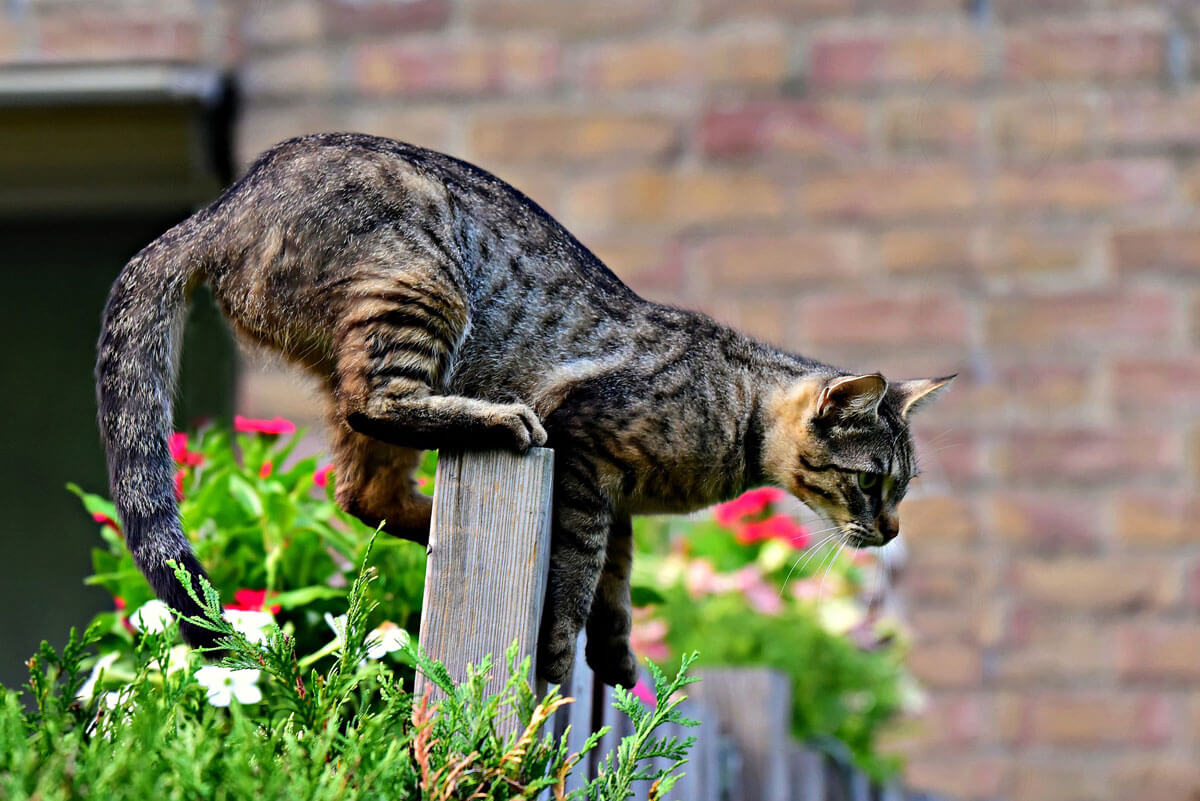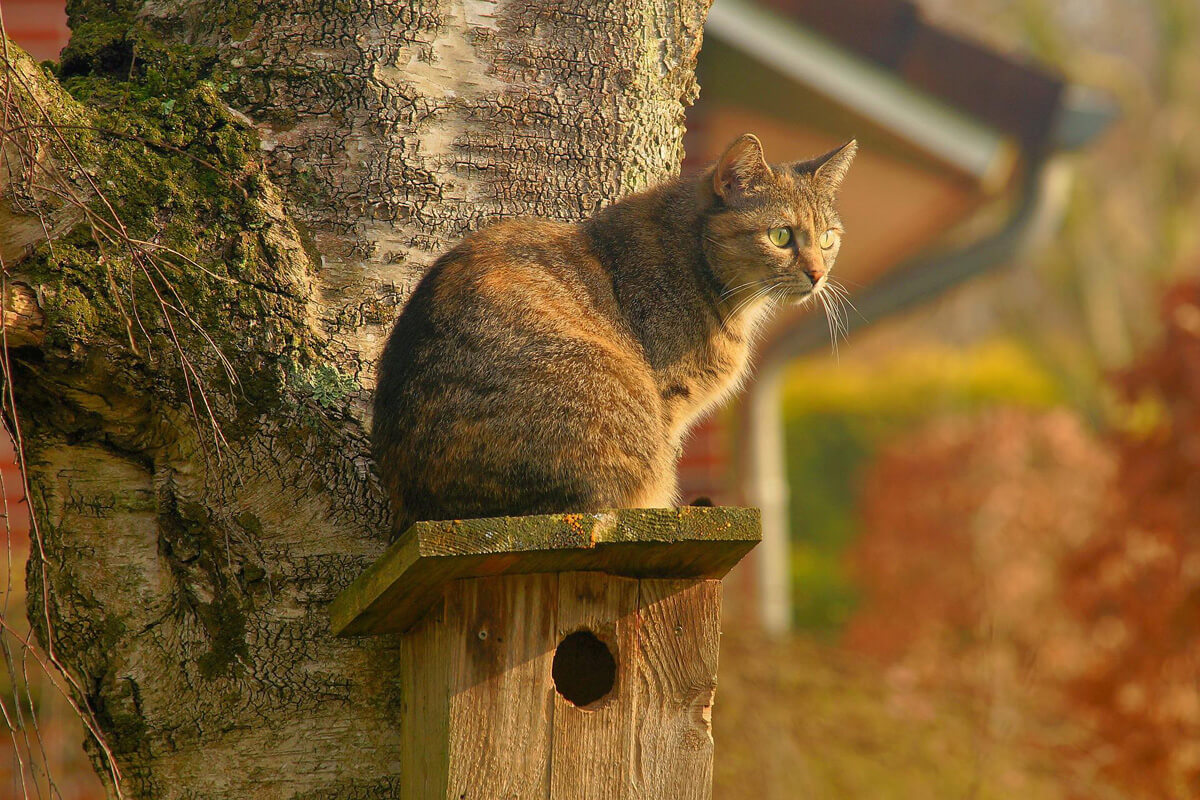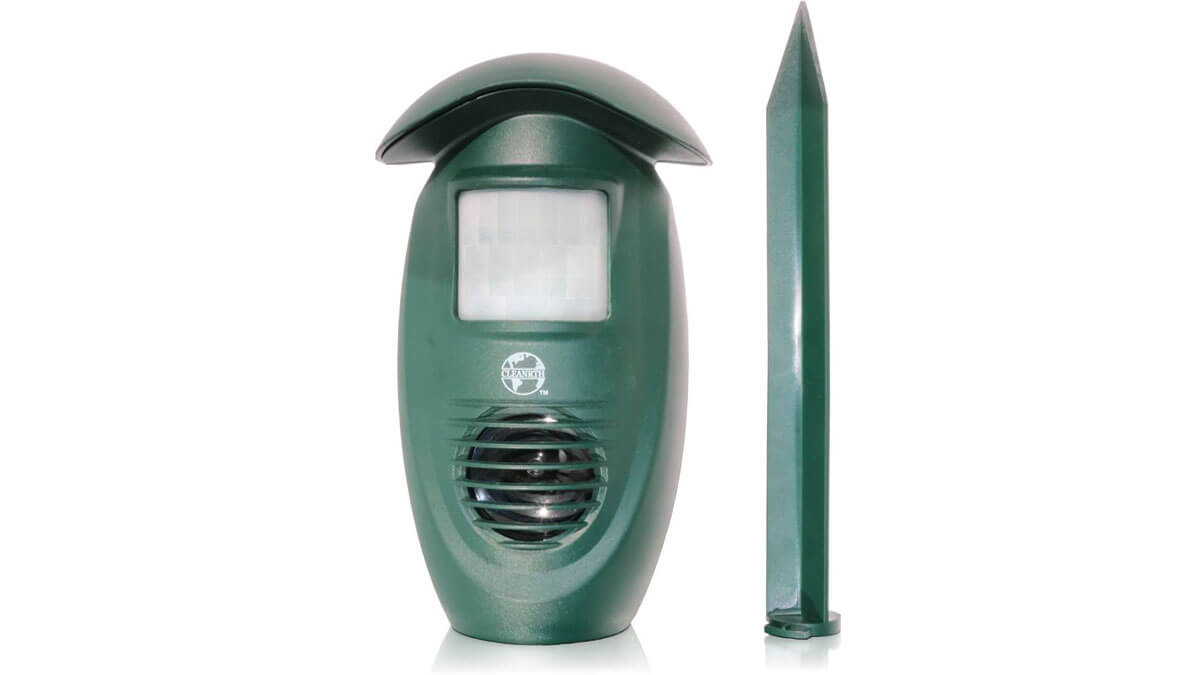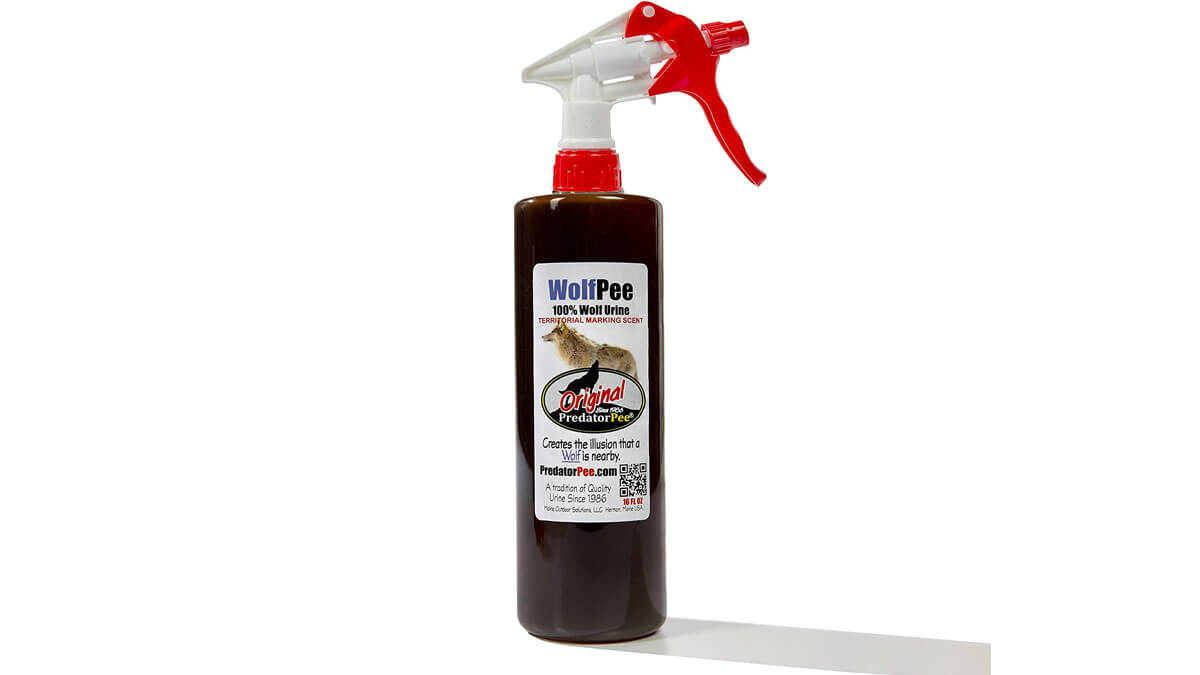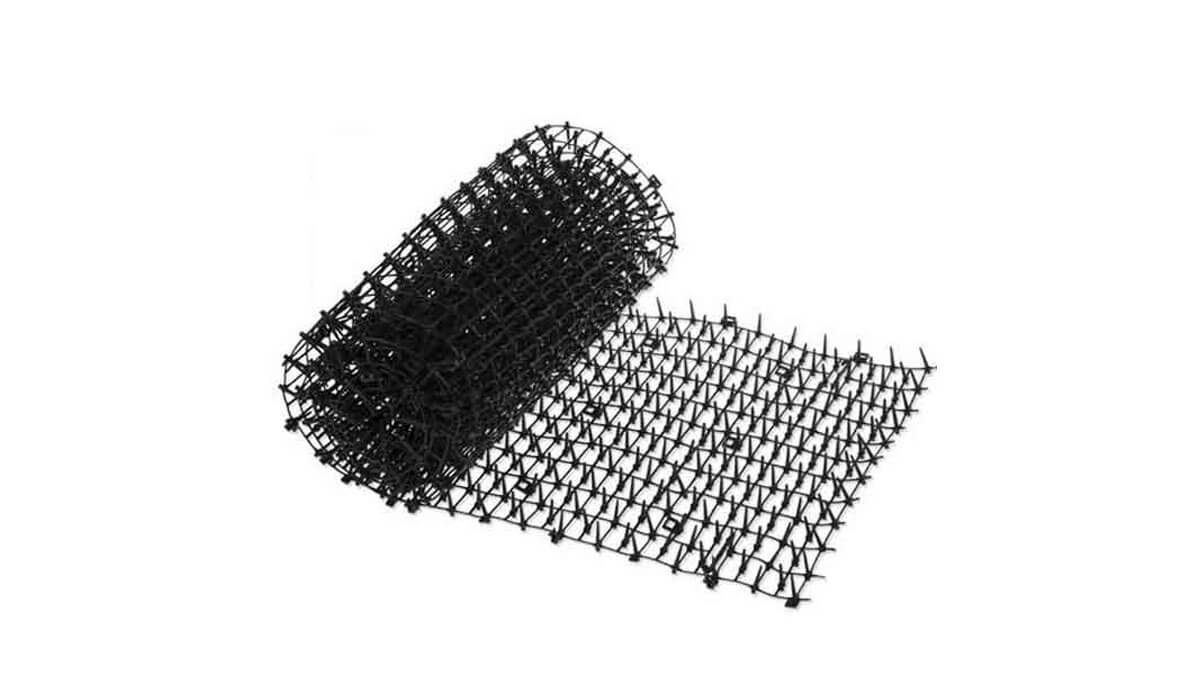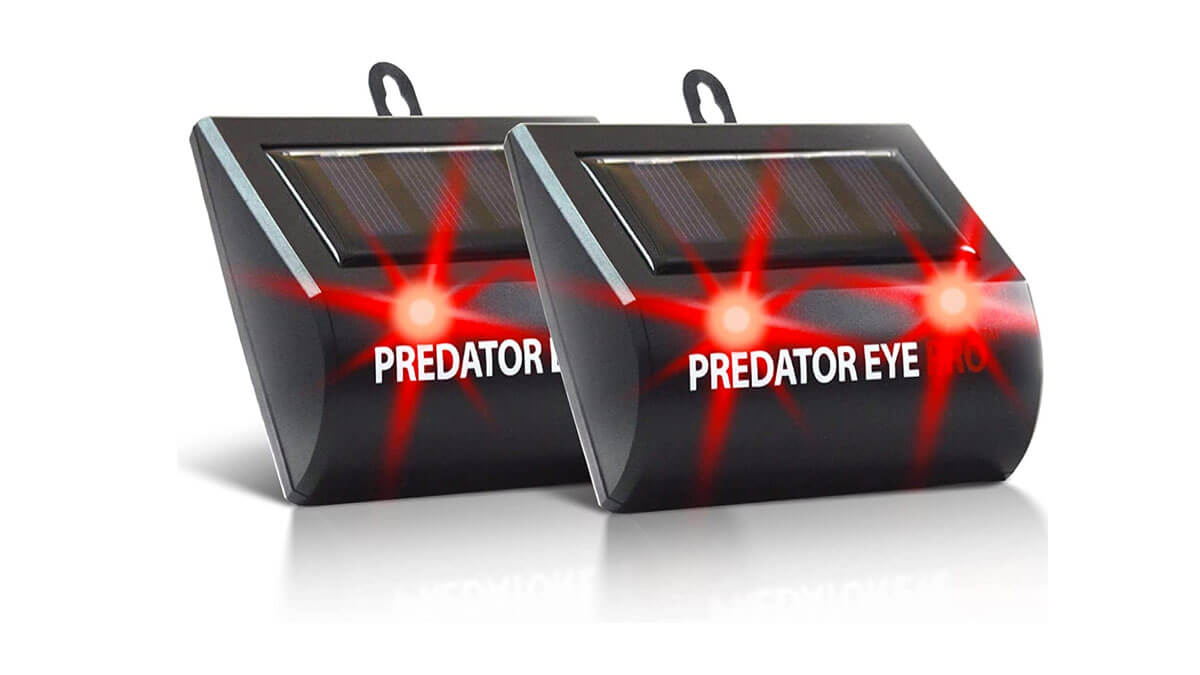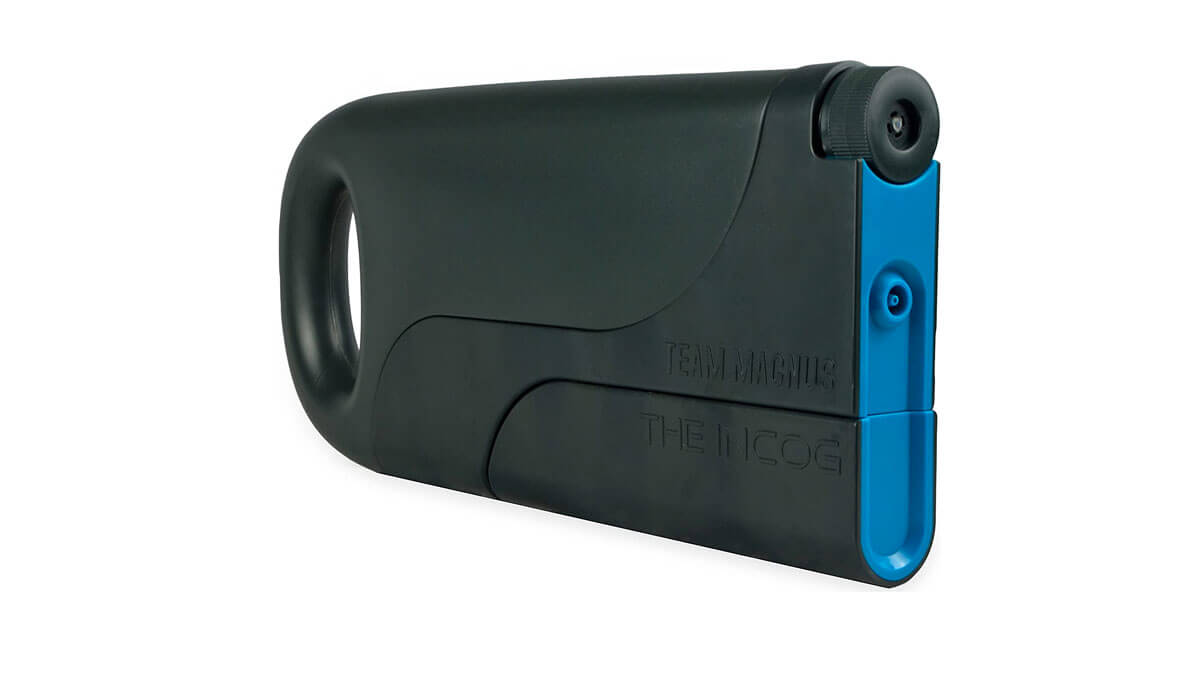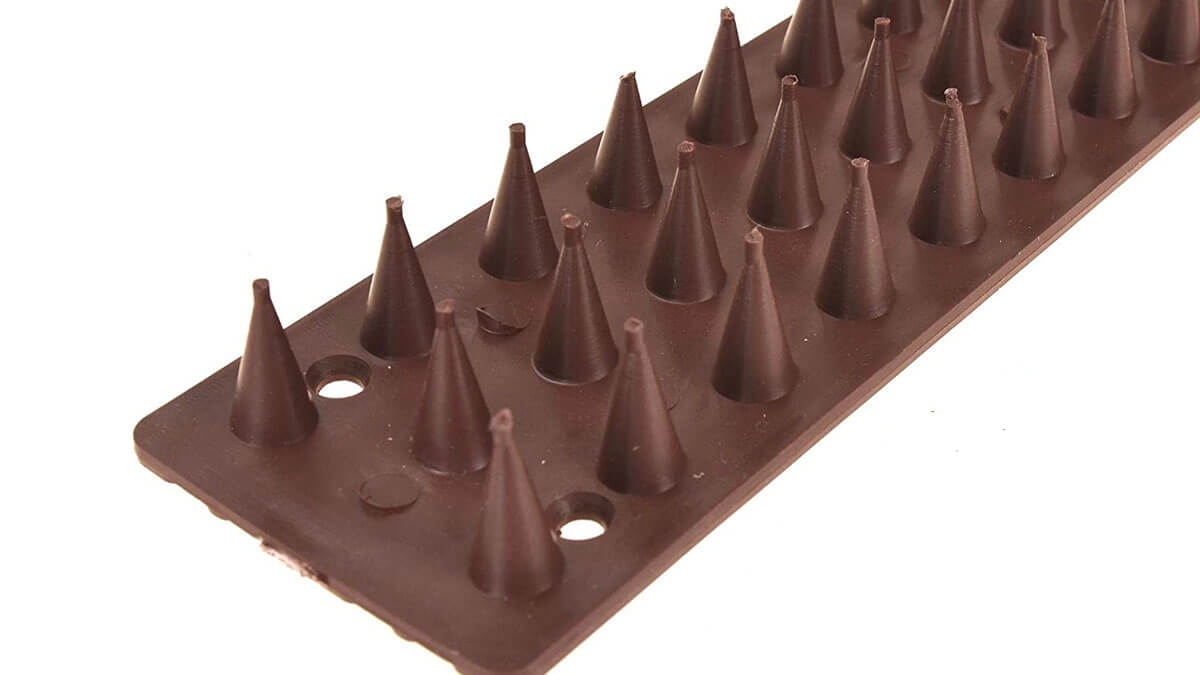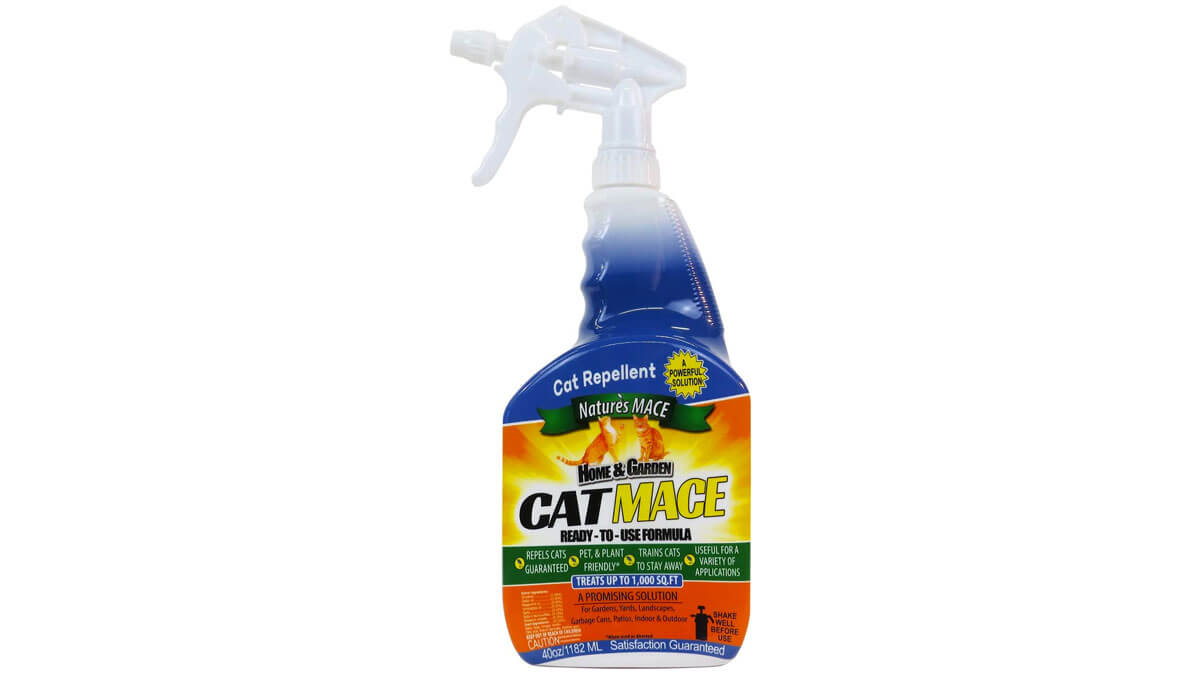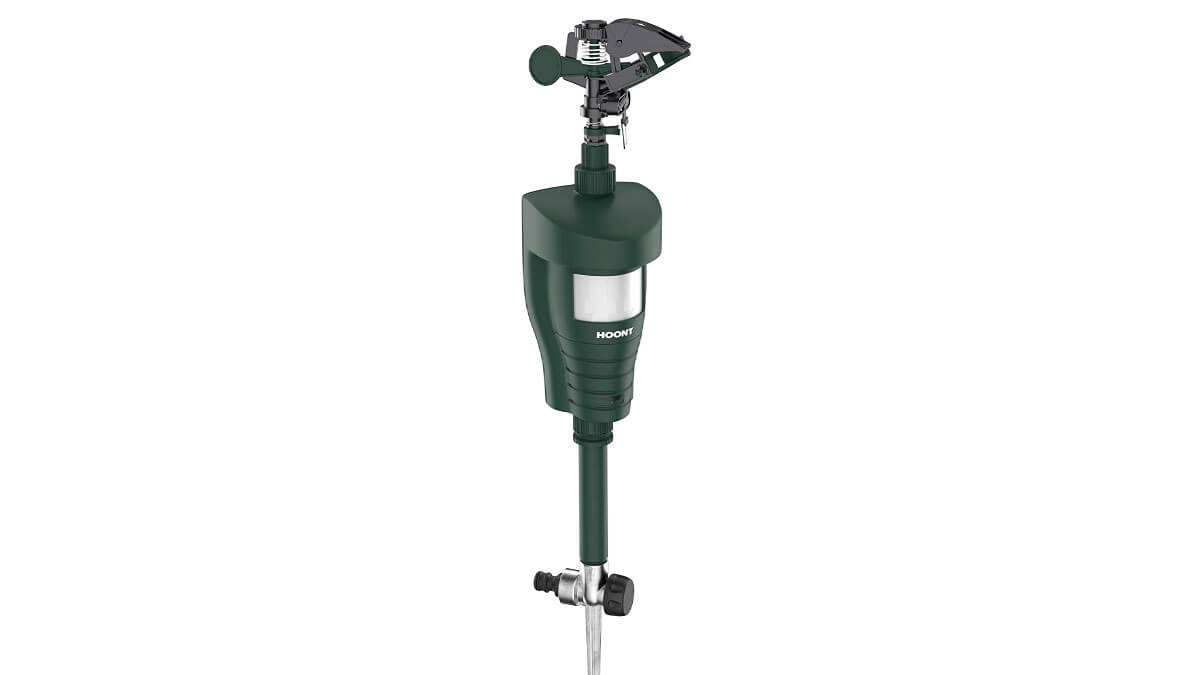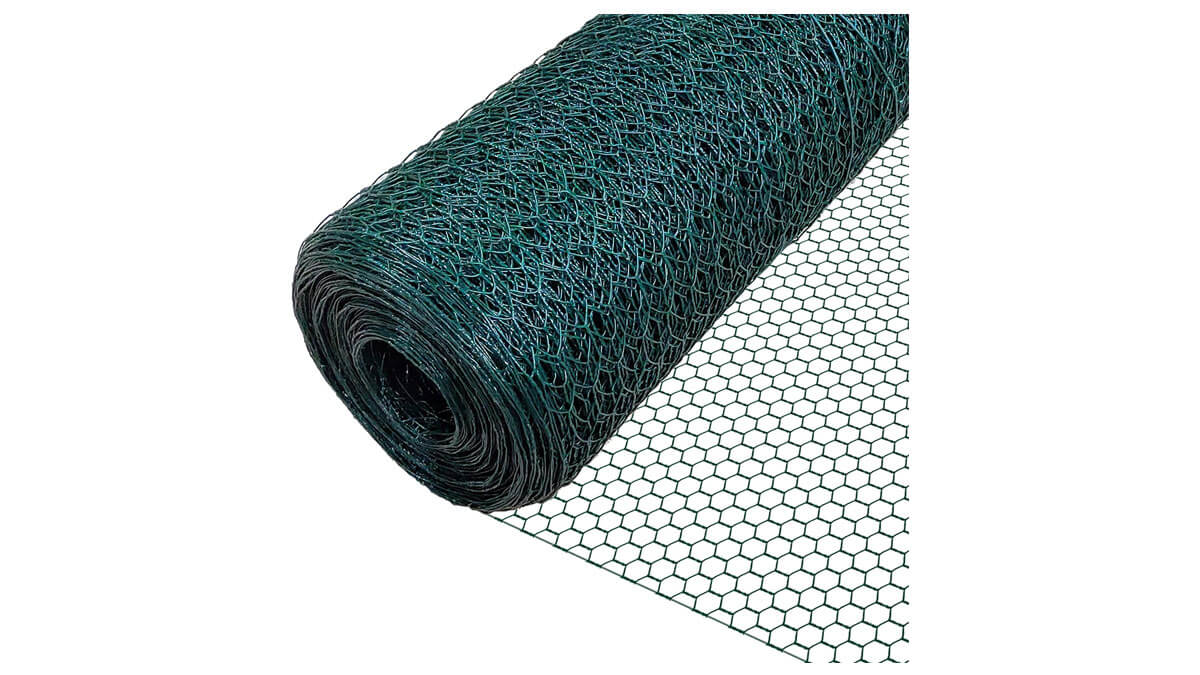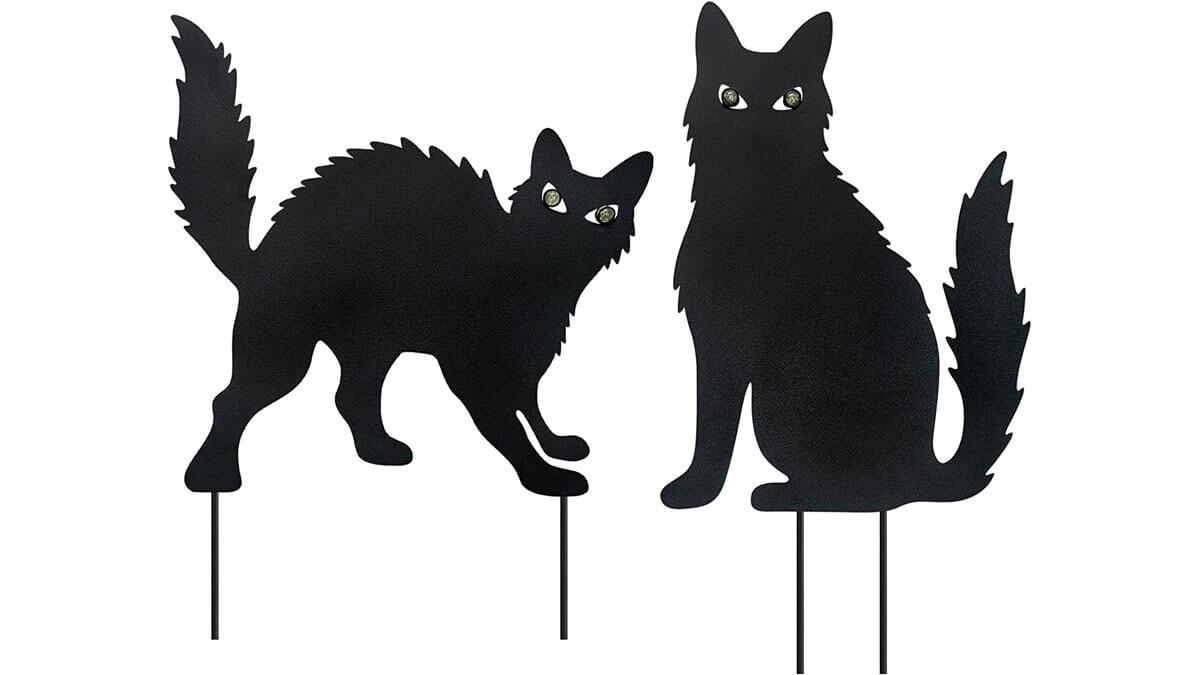The Top 10 cat deterrents for your yard – USA
Are you tired of dealing with cat problems in your yard, such as pooping or harming wildlife? Do you want to find a solution to protect your property effectively?
With an estimated population of up to 100 million domestic and feral cats in the United States, it’s no wonder that cat intrusions are a widespread issue for many people across the country.
In this article, we will cover:
- The reasons why cats pose such a problem in the US
- A 3-step plan to effectively keep cats away from your yard
- The top 10 cat deterrent products and tips on how to maximize their effectiveness.
In 2013, an eye-opening study was published in the scientific journal Nature Communications. It suggested that cats in the USA were responsible for the deaths of at least 1.4 billion birds and 6.9 million mammals every year, far more than had been previously thought.
According to the American Veterinary Medical Association (AVMA), Americans own approximately 58 million domestic cats. In addition to this, the Humane Society for the United States estimates there are another 30 – 40 million feral, or ‘community’, cats which account for 80% of all cats born in the US every year.
That’s a huge amount of cats, but as our feline friends retain so much of their ancestors’ incredible hunting skills, it perhaps shouldn’t be a surprise that cats are responsible for so many yearly casualties.
With that many cats roaming around, it’s little wonder that a high number of people in the US are adversely affected by negative cat behaviour and want to find a solution to the unwanted intrusions into their yards and properties.
Keep reading to discover the ten most-effective cat deterrents you can use in your yard to keep cats away and reduce the frustrating problems that you’ve been experiencing.
The cat poop problem
The annual environmental deposit of cat feces in the US is 1.2 million tons. Toxoplasma gondii oocysts may remain viable for several years and thus accumulate… This represents a major potential public health problem. The proper disposal of cat litter, keeping cats indoors, reducing the feral cat population, and protecting the play areas of children might potentially reduce the oocyst burden.“
Torrey, E.F. & Yolken, R.H. – The Stanley Medical Research Institute, Maryland
One of the biggest objections people have regarding cats coming uninvited into their yards is their propensity for using lawns, flowerbeds, decks or patios as a litter tray.
With cats responsible for unleashing 2.6 billion pounds of fecal matter in the USA every year, cat poop is a serious problem that affects many proud gardeners across the country.
Cat poop smells really bad and contains the parasite Toxoplasma gondii, which can cause the Toxoplasmosis infection in humans, dogs and other warm-blooded animals.
Toxoplasmosis can be caught by direct contact with infected feces, but, worryingly, also from contaminated soil where poop may once have been.
While this infection can generally be avoided with good hand washing, it is capable of causing serious illness in certain instances. However small the chances, we’d rather not run the risk, especially where young children or those with weakened immune systems are concerned.
Because there are so many feral and domestic cats in the United States, you’ve no idea what the cats are eating, what’s lurking in their medical history or the state of their gastrointestinal health. Having to clean up germ-ridden poop on a regular basis quickly becomes quite disgusting, so it’s understandable why you might want to take action to keep cats away.
On a slightly lighter, but no less annoying note, it’s also incredibly irritating when you want to cut your lawn but first have to go round with poop bags or a shovel before you can get started!
The bird predation problem
Another major reason why you might want to keep cats out of your yard is because they kill so many birds, as evidenced in the study referenced earlier.
It’s horrible to see a cat pounce on a bird or swipe one out of the air, particularly if you’re an avid bird-lover who actively encourages them into your garden. Of course, it’s awful to see a cat actually kill a bird, but often they just toy with them, leaving the poor birds severely injured and exhausted. Even during the unsuccessful hunts, there’s always the worry that this might be the time one of the birds gets caught.
In 2020, the award-winning photographer, Jak Wonderly, released a photo entitled ‘Caught by Cats’. It contained 232 animals, many of them birds, that were brought to a wildlife rescue hospital after having been attacked by cats. All 232 in the photo died as a result of their injuries.
The photo made international headlines and drew a lot of attention to the fact that predatory cats are a serious issue in the USA, and across the world.
“Cats are in the same area for 15 – 20 years. They’re fed by their humans, they don’t have to hunt to survive. They just constantly kill and nothing changes their population, so it doesn’t give local wild populations time to rebound as they would if it was a natural predator-prey cycle.”
Melanie Piazza, Wildcare Wildlife Hospital, California
3 steps to deterring cats
Before we get to the list of top cat deterrent products, it’s worth thinking about your yard and what you can do to ensure that any deterrents you use in it are as effective as possible.
There’s little point in wasting your time and money on products if they don’t actually solve the problems and annoyances that the intruding cat has been causing you.
To enable you to maximize the effectiveness of your deterrents, below you’ll find a simple 3-step blueprint that you can follow to help you get on the path to success.
These steps lay out a plan to use your chosen cat deterrents with a definite purpose, enabling you to finally put a stop to the cat problems that have been plaguing your yard and any other areas you wish to protect.
Step 1 – Find the cat’s entry point
A very important point to understand about cats is they really don’t like changes to their environment. If you’ve ever owned a cat you’ll know how much they dislike a disruption to the status quo – such as a new item of furniture or a visiting toddler.
You can apply this knowledge to the cats that intrude into your yard.
Up until now, they have probably got into the habit of entering your yard unchallenged and are able to do as they please. They will continue to do this unless you do something to break this habit and give them a reason to be more reluctant to visit your property.
The fact they enjoy habit and routine also means the cats are likely to come into your yard at the same place each time, which fortunately makes the entry point fairly easy to identify.
Locating where the cats come in gives you a huge competitive advantage in your battle to stop them causing problems over the long term.
The reason why the entry point is important is because it’s the place where you have the biggest opportunity to influence a cat’s decision to enter your property or not.
If the approaching cat doesn’t see, smell, hear or feel anything of concern, then it will happily enter your yard as normal. This is likely how the cat currently views your garden and is why it keeps visiting.
However, if you use an effective variety of deterrents at the entry point, you’ll trigger the cat’s sensory alarms the moment it tries to set foot in your garden. This will arouse suspicion, uncertainty and discomfort at an instinctive level, which should cause the cat’s brain to tell itself, “No, this feels too risky, I won’t go in.”
Targeting the entry point is a key strategic manoeuvre, deterring the cat before it gets the opportunity to poop, kill birds or commit any other misdemeanors that you’ve had enough of.
You’ll be making the entrance to your yard feel much more unwelcoming and you’ll disrupt the cat’s normal routine. The more uncomfortable it feels, the less time it will want to spend in your yard.
Step 2 – Use multiple deterrents
Cats are fantastic physiological and sensory animals, which is what makes them such efficient hunting machines, to the detriment of birds and small mammals.
They also have eyes that are far superior to humans, with great visibility in low light and the ability to detect microscopic movements, even in their peripheral vision.
Also unfortunately for birds and mammals, cats have incredible hearing and are able to locate prey with pinpoint accuracy.
A cat can hear sounds across eleven octaves, including two octaves above the human hearing range, which is in ultrasonic territory. This means cats can hear the high-pitched noises made by mice, bats and other small rodents, another reason why they’re so vulnerable.
As if that wasn’t enough, cats have an amazing sense of smell, with a surface area dedicated to trapping scent five times that of a human.
Not only do they use their nose, but cats have a kind of second sense of smell called the ‘flehman response’. This allows them to suck in air and further identify smells through a duct in the roof of their mouth. It’s really quite impressive.
The reason for pointing out these formidable feline factoids is to highlight how in-tune with their senses and instincts cats actually are. They rely on the information they receive from their sensory glands for every aspect of their life. Therefore, if you want to successfully reduce your cat problems, it’s worthwhile using a range of cat deterrents, each targeting a different sense.
As an example, if you started using two scented cat repellents in your yard, both will trigger a cat’s alarm bells via its sense of smell. That’s great and it’s far more effective than not taking any action.
However, if you throw an ultrasonic deterrent into the equation and put it to use alongside a scent-based deterrent, the cat will be receiving alert messages to its ears and its nose. Danger signals to two senses rather than one.
A cat that has at least two instincts issuing a warning that your yard may contain danger, discomfort or confrontation is far more likely to be convinced that your yard is too high-risk to continue visiting.
Step 3 – Be patient and persistent
When attempting to deter cats from your yard, it’s worth keeping in mind that some cats will be timid and easy to scare, while others will be bolder and more persistent. Much will depend on the nature of the individual cat and how much human interaction it had during its social-conditioning phase as a kitten.
There are cats that will run away at the merest hint of confrontation. There are other cats that will keep on trying their luck and take longer to get the message.
It must be remembered that a domestic cat has the luxury of a nice, comfortable home to run to, whereas a feral cat will need to take more risks in order to survive.
If you make the assumption that you’re dealing with the most risk-taking, confident and persistent type of cat, you will be setting your expectations pragmatically and will get greater satisfaction from your victories.
Clearly, your garden has become of great interest to your neighborhood cats and you need to give them a reason to view your yard differently.
A dominant cat is unlikely to suddenly disappear without trace after a singular bad experience. Instead, it will take repeated negative encounters for the cat to realise that your property is not the safe haven that it used to be.
If you only use a cat deterrent product once, the visiting cat will think this was just a one-off inconvenience, its habits won’t be changed and and it will quickly resume intruding into your yard. However, if you use a cat deterrent repeatedly, the cat will soon come to the conclusion that your yard has become unpleasant, unwelcoming and uncomfortable on a permanent basis, and won’t want to spend time there.
Repelling cats successfully is definitely not an exact science, and it doesn’t always happen instantaneously. But by being patient and persistent with your efforts, the cat will be forced re-evaluate the way it views your yard as somewhere that is irritating, unsafe and unpredictable.
Ultimately, the action you take to provoke this change of attitude will result in the reduction, or even complete eradication, of the cat-related nuisances that have been causing you so much frustration.
The Top 10 Cat Deterrents USA
It might be the relentless pooping, the constant bird predation, the stressing out of your dog or even the bullying of your own cat that’s resulted in you wanting to find something to improve the situation in your yard.
Whatever, the reason, you now know a lot more about how cats operate and have a strategy in place. It’s time to take action and put some cat deterrents to work in your yard.
In the list below, the deterrents included are the best of their type. Each product works slightly differently in the way they interact with the cat, targeting varying sensory receptors, like hearing, touch, sight and smell. Hopefully you’ll find something here that is right for your individual yard, problem and circumstances.
Don’t be afraid of trying more than one type of deterrent on the cats that visit. As mentioned previously, cats place a lot of faith in their instincts to tell them whether to proceed or retreat, so the more senses are warning the cat about the area they’re entering, the more success you’ll have.
All the deterrents below are humane solutions and will not cause the intruding cats any harm. A cat that’s annoying you may well be someone else’s much-loved pet, so please always stick to calm and considered methods of cat control. Those are the kind you’ll find on this list.
Here’s wishing you all the best with achieving some positive outcomes in your yard!
As an Amazon Associate this website earns commissions from qualifying purchases. We really appreciate your use of our affiliate links if you have found the information on this page helpful as it helps keep the site running!
1. Cleanrth TSAR550 Ultrasonic Animal Repeller
A highly-effective, motion-activated device that humanely deters cats using high-pitched noises.
$$$$
Installing an ultrasonic device is a really effective way of automating the process of protecting your yard from cats.
Each time a cat enters the detection zone and triggers the in-built infrared motion sensor, the unit emits high-pitched blasts of noise until the cat leaves the area.
Within a short amount of time, the cat learns to associate your yard with the irritating noises, which gradually reduces the frequency and duration of its visits. Of course, the less time the cat spends in your garden, the less likely it is to poop, kill birds or other nuisance behaviour.
Other types of cat deterrent, such as repellent sprays, require a more hands-on approach, which can prove to be very time-consuming if you have a particularly bold cat or multiple visitors.
Ultrasonic devices do all the hard work for you without you having to constantly monitor your garden. Regardless of the time of day or whether you’re in or out, an ultrasonic repeller will provide an intruding cat with a constant and consistent deterrent.
The Cleanrth TS550 is an especially effective cat deterrent as it emits sounds at frequencies between 22 – 28 kHz, which is perfect for activating a cat’s ‘fight or flight’ response.
It’s also one of the few ultrasonic repellers available that comes with a 38ft cord and 9V DC 500mA power adapter, so you can benefit from plugging it into your home’s mains power system. Alternatively the Cleanrth TS550 can be powered by 2 x 9 Volt batteries if you require extra positional flexibility.
These power options are far more preferable to the majority of ultrasonic devices on the market, which rely on solar power and rechargeable batteries – which quickly degrade and lose power and effectiveness.
Choose your form of power, attach the mounting spike, position the TS550 in your yard and switch it on. Setting it up is as simple as that.
Note – If you’ve been looking at the UK-only CATWatch Ultrasonic Deterrent, the Cleanrth TSR550 is the USA’s closest equivalent.
✔ Pros
- Useful for all types of yard and garden
- Large detection distance of up to 66ft
- Provides long-term, 24/7 humane protection from cats
- Easy to set up
- Low maintenance
- Safe for dogs
- Comes with power adapter and 38ft cord
✘ Cons
- High initial purchase price
2. 100% Wolf Pee
Pure urine collected from real wolves that replicates scent-marking and gives the impression wolves are in the area.
$$$
Wolves are large members of the Canidae (dog) family, so are a natural enemy to feral and domestic cats.
Because wolves tend to hunt in packs, a cat that gets a whiff of a wolf is likely to think there are many more nearby, so will do whatever it can to avoid the area and any potential confrontation. This is what makes wolf pee such an effective cat deterrent.
You can give the impression that your yard is frequented by wolves by spraying wolf pee at the place where the cats usually and on other prominent places around your garden or property.
For the squeamish, having to spray 100% wolf urine around your property may understandably be a bit too much, but for those of you not phased by the extremely strong smell, this can be a very successful in keeping cats away.
The wolf pee will need to be sprayed on a fairly regular basis in order to ensure the scent remains strong and effective. Time and heavy rain will weaken the potency of the scent, so this is a deterrent method you need to maintain every so often.
✔ Pros
- Particularly useful for feral cat problems
- Great for protecting perimeter of your property
- Cats repelled by the scent of a natural predator
- Very easy, if smelly, to use
✘ Cons
- Not for the faint-hearted
- Requires weekly applications
- Hard to get off clothing
- Less suitable for highly-populated areas
3. Scat mat prickle strips
Rows of prickly plastic spikes that stop cats pooping and digging in flowerbeds, borders or potted plants without causing injury.
$$
One of the main complaints people have about intruding cats is their tendency to poop in flowerbeds, vegetable patches, or other open-soil areas where they’re trying to grow things.
A great way to protect these areas and stop cats fouling on them is by installing some prickle strips, also known as scat mats or dig stoppers.
Prickle strips are rows of gridded plastic spikes that can be easily placed onto the affected areas and secured in place with metal tent pegs or stakes.
Cats have very sensitive pads on the underside of their paws, so the prickle strips feel uncomfortable and awkward to walk on, without running the risk of causing the cats any actual injury. If your flowerbed feels unpleasant to walk on, cats won’t want to poop there.
The fact the prickle strips are flexible and easy to cut to size makes them great for fitting into oddly-shaped areas or stopping cats climbing vertically. They can be wrapped around trees, attached to fences, placed on garden furniture (when not in use), birdtables or any other outdoor surface that you might want to stop cats climbing up or jumping on.
While installing prickle strips in the most-affected areas of your yard will not stop cats coming into your garden completely, you should find they have an immediate impact in reducing the pooping problem. If your garden is generally now more awkward to navigate than it was in the past, you might find the cat loses interest and spends less time in your yard as a result.
Note – Consider fixing the prickle strips securely in place with garden stakes/staples [aff] as the included plastic hooks are often a little lightweight.
✔ Pros
- Useful if you have plants, flowers or grow vegetables
- Protects open soil areas from being pooped on
- Prevents cats climbing vertically
- Still enables plants and seedlings to grow
- Easy to install
✘ Cons
- Only protects the specific area where the strips are installed
- Not suitable for artificial grass, patios or decking
4. Predator Eye red flashing LEDs
Red night lights that flash, deterring cats by mimicking the eyes of rival animal.
$$
Predator Eyes are a very simple deterrent that gives cats the impression they are being watched while in your garden at night. Prolonged eye contact makes cats feel threatened and causes them to back down and retreat from the area.
These devices can be hung up on a wall or fence post and the two red flashing LEDs are surprisingly bright considering their size. So that you don’t keep being distracted by them, you might want to consider positioning them facing away from your line of sight so you don’t see them when you look out into your yard. Also don’t mount them too high – install them at about the same height as a cat.
The Predator Eye units are solar-powered and contain a light sensor, so they charge up during the day, then start flashing at night to deter unwanted feline visitors.
It’s best to use the flashing Predator Eyes as a supplementary deterrent to be used in conjunction with something else, as they don’t do anything during the day. Many cats are quite nocturnal but don’t rely on these as your only method of cat deterrence.
✔ Pros
- Extremely easy to install
- Zero maintenance
- Solar-powered, no batteries needed
- Weatherproof
✘ Cons
- Only come on at nightfall
- Ineffective during daylight
- Supplementary deterrent only
5. Team Magnus Incog water gun
A water gun with flat, slimline design and easy-grab handle for quickly squirting and deterring misbehaving cats.
$$
If you’re looking for a no-frills approach to deterring cats, then using a water gun is as basic as it gets. Nonetheless, it can be very effective.
You spot a cat in your yard doing something it shouldn’t, you grab your water pistol and give it a spray in the cat’s general direction. The cat doesn’t like getting wet and it runs away. Simple as that.
With this particular water gun from Team Magnus, it’s actually quite discreet, so it doesn’t look like you’re terrorising cats with a child’s toy.
The quick-grab handle makes it easy to pick up quickly and it has a range of up to 32ft, which is ideal if you’ve got a small yard, porch or deck.
The subtle, flat design allows it to be conveniently stored out of the way when not in use, rather than discarded on the floor or awkwardly propped up against a wall like most water guns designed for children.
The drawback is you obviously need to be physically present when using a water gun, as it relies on you catching a cat in the act. In an ideal world, a cat should be encountering a deterrent at all times, regardless of you being in or out, but a water pistol is definitely effective if you’ve only got a small-scale cat problem.
✔ Pros
- Great for stopping small-scale nuisance behaviour
- Very easy to use and store
- Instantaneous deterrent
- Humane, harmless fun
- Low-budget
✘ Cons
- Requires you to be there
- Not a 24/7 solution
- Problem area must be within 32ft of you
- Only a temporary deterrent effect
6. Anti-climb spikes – wall and fence
Plastic spikes that make it difficult for cats to navigate their way into your yard along the top of fences, walls and other flat surfaces.
$$
Cats are very athletic and have superb balance, so you might have a cat that enters your garden by walking along a narrow ledge on top of your perimeter fence or wall. You can make access much more difficult for the cat by fixing some wall and fence spikes onto all flat ledges.
The spikes can be fixed in place using screws, nails or a strong outdoor adhesive [aff] and are easy to cut to fit if needed.
The anti-climb spikes are made of hard-wearing plastic, but not designed to harm cats. They’re simply firm enough to put pressure on a cat’s sensitive foot pads, making it more difficult to navigate the military-style obstacle course that you’ve created.
If a cat has to put in a lot of energy and effort in order to enter your yard, it’s more likely to give up and go somewhere easier to access instead.
✔ Pros
- Useful if your yard is enclosed by fencing or walls.
- Easy to install
- Provides an instant obstacle
- Inexpensive
- Won’t harm cats or other animals
✘ Cons
- Not useful if you don’t have flat surfaces
- Persistent cats may just find an alternative way in
7. Nature’s Mace cat repellent spray
A wildlife and plant-friendly spray, containing many active ingredients that naturally repel cats, without nasty chemicals.
$$
Repellent sprays are a convenient way to deter cats from particular areas of your yard. They basically act as a training tool, using scents that cats dislike in order to teach them to stay away from places that smell off-putting.
The blend of ingredients in Cat Mace includes peppermint, lemongrass, garlic and vinegar – all of which cats naturally dislike and will do their best to avoid. The non-toxic formulation mean this spray can be used anywhere without fear of harming plants, wildlife, or pets.
Cat Mace is especially useful for hard surfaces like decks, patios, porches and other common areas where cats like to pee or poop.
The spray solution can be bought ready-to-use or in concentrate form, so you can get exactly the right amount no matter what the size of the area in need of protection.
The key is to use it quite intensely every day for the first seven days so that the cats really receive the full repellent effect consistently.
✔ Pros
- Useful for keeping cats away from certain areas or objects
- Very easy to use
- Safe for internal and external use
- Contains many naturally-occurring ingredients
- Garden-friendly formulation
✘ Cons
- Needs using regularly to be effective
- Time-consuming in large yards
8. Motion-activated water sprinkler
A water sprinkler containing a motion sensor that scares cats by blasting out jets of water in their direction.
$$$
Motion-activated sprinklers, also known as ‘water scarecrows’, operate very simply when it comes to deterring cats. You connect the device to a garden hose and the sprinkler shoots out a jet of water every time something crosses the motion sensor.
Not only does the aggressive arc of water act as an effective deterrent, but so does the noise of the mechanism jumping into into action. Many people will admit to a sense of satisfaction when seeing cats go running for cover the first few times it gets activated.
Be aware however that the sprinkler isn’t just restricted to spraying cats. Anyone that moves into the detection zone (you, children, dogs, elderly relatives) are likely to get a soaking.
The battery-powered (2 x AA) Hoont Sprinkler does have sensitivity controls, but you may want to switch it off when you’re using your garden to avoid receiving a squirt of water!
✔ Pros
- Useful for protecting lawns and flowerbeds
- Provides 24/7 protection if left on
- Good detection distance of up to 30ft
- Power and water efficient
- Straightforward to set up
✘ Cons
- Triggered by all movement, not just cats
- Can be noisy at night
- If turned off, easy to forget to switch back on
- Requires an outdoor faucet, which must be left on
- Likely to get an occasional soaking yourself
9. Chicken wire
Wire meshing that can be installed horizontally or vertically to prevent cats from entering certain areas of your yard or property.
$
Chicken wire is a classic way of keeping cats, and all sorts of animals, out of places they shouldn’t be entering.
It can be installed vertically to create a small fence around things like flowerbeds, borders, potted plants, vegetable patches or anywhere else in need of cat-proofing. Bending the top of the wire inwards will further discourage cats from trying to jump over it.
Alternatively, it can be laid flat to stop cats digging in soil or using the ground underneath as a litter tray.
Chicken wire tends to come with several hole sizes. Smaller holes are good for installing vertically and for providing support to plants. Larger holes make it easy for plants to grow through and also enable the chicken wire to be removed at a later time, without causing too much plant damage.
Modern chicken wire is often available with a PVC coating, which looks more attractive in a garden setting, makes it easier to handle and prevents rust.
✔ Pros
- A tried and tested, versatile deterrent
- Sturdy and durable
- Easy to cut and shape
- Allows plant growth
✘ Cons
- Time-consuming to install
- Often considered unattractive
- Not suitable for hard ground surfaces
10. Metal cat silhouettes
Metal black cat silhouettes with spiky fur and reflective eyes that fake the body language of cats getting ready for confrontation.
$
Cats rely heavily on body language as a way of communicating between themselves, and it can really set the tone as to whether the interaction is going to be positive or negative.
For example, a cat arching its back and spiking up its fur is a way of making itself look as big as possible. This kind of behaviour is an indication that the cat is preparing for some sort of aggression or confrontation.
For an intruding cat coming into the area, seeing these characteristics will make it want to retreat rather than getting into a fight. It’s simply not in a cat’s interest to risk injury in a scrap.
Though these metal cat silhouettes are designed as Halloween decorations, they actually do an excellent job of mimicking confrontational body language, which makes them worth putting in your yard all year round.
They’re easy to push into your lawn or a flowerbed and are therefore easy to remove again if necessary. The cats’ eyes are reflective which replicate the tapetum lucidum (the shiny, reflective bit of a cat’s eye), adding a little extra authenticity to the silhouettes and making them useful nighttime deterrents.
The cat silhouettes shouldn’t be the only thing you rely on to keep cats away, but absolutely consider them as part of your wider cat deterrent arsenal.
✔ Pros
- Replicate defensive cat body language
- Mimic shiny cats’ eyes
- Easy to install
- Low cost
✘ Cons
- Bold and persistent cats may learn to ignore them
- May require additional deterrents to deter cats fully
RESOURCES
Some of the resources below may contain affiliate links, which means we receive a commission (at no extra cost to you) if you use that link to make a purchase. We appreciate your use of these links as it helps to keep this website running! Thank you.
All cat deterrents mentioned in the article are available via the affiliate links below:
- Cleanrth TSAR550 Ultrasonic Animal Repeller [aff]
- 100% Wolf Pee [aff]
- Scat Mat Prickle Strips [aff]
- Predator Eye Red Flashing LEDs [aff]
- Team Magnus Incog Water Gun [aff]
- Anti-climb Wall & Fence Spikes [aff]
- Nature’s Mace Cat Repellent Spray [aff]
- Motion-activated Water Sprinkler [aff]
- Chicken Wire [aff]
- Metal Cat Silhouettes [aff]
Further reading:

